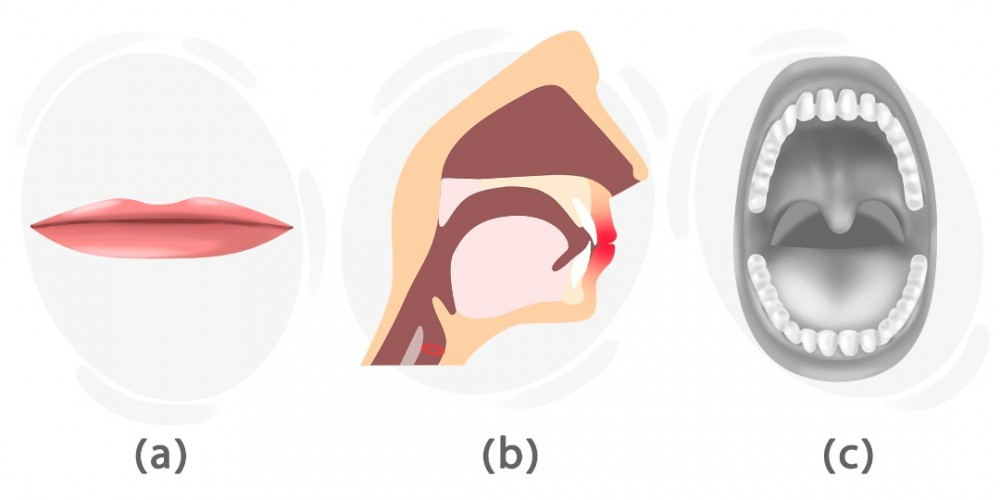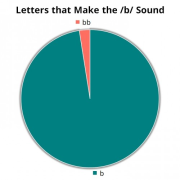How to Pronounce the /b/ Sound

In this lesson, we are going to focus on producing the /b/ sound and see what articulatory organs are used in the process.
What Type of Sound is /b/?
/b/ is a consonant sound in the English language.
How to Produce /b/?


As you can see in picture (a), in order to produce this sound, we put our lips together. However, as you can see in the picture (b), the teeth are slightly parted. So, we stop the airflow and the uvula blocks the air from coming out of the nose. So, we part our lips, releasing the air, resulting in the /b/ sound. As it is clear, this sound is produced from the mouth. Here, a little red circle in the throat shows the vocal cords. When it is red, it means that we use the vocal cords. So, the sound is voiced.
As you can see, in picture (c), the tongue does not touch anywhere and the voice is directly produced out of the lips.
Which Letters are Pronounced as /b/?
The sound /b/ is represented by the following letters:


b:
bike /bʌɪk/
bin /bɪn/
suburb /sʌb·ɜrb/
beautiful /bju·t̬ɪ·fəl/
bb:
hobby /ˈhɑ.bi/
bubble /ˈbʌb.əl/
/b/ Sound in the Most Common World Languages
As you can see in the table below, the common world languages already have the /b/ sound. Although the sound may vary slightly in some languages. Look:
Existence | Example | |
|---|---|---|
Mandarin* | ✔ | 包 (bāo) |
Spanish | ✔ | invertir |
Hindi | ✔ | बाल |
Bengali | ✔ | বই |
Portuguese | ✔ | bato |
Russian | ✔ | рыба |
Japanese | ✔ | 番 (ban) |
Vietnamese | ✔ | bàn |
Turkish | ✔ | bulut |
French | ✔ | boue |
German | ✔ | aber |
Italian | ✔ | bile |
Persian | ✔ | خوب |
Standard Arabic | ✔ | باب |
Korean | ✔ | 지붕 |
Indonesian | ✔ | sebab |
Filipino | ✔ | baboy |
Hungarian | ✔ | baba |
Dutch | ✔ | boer |
Polish | ✔ | bas |
Romanian | ✔ | bou |
Swedish | ✔ | bra |
Czech | ✔ | bota |
Greek | ✔ | μπόχα |
Ukrainian | ✔ | брат |
Urdu | ✔ | بال |
* The sound exists in the language, but the pronunciation may differ.
Listening
Below, there is an audio file that helps you learn the proper pronunciation of the /b/ sound:
Comments
(0)